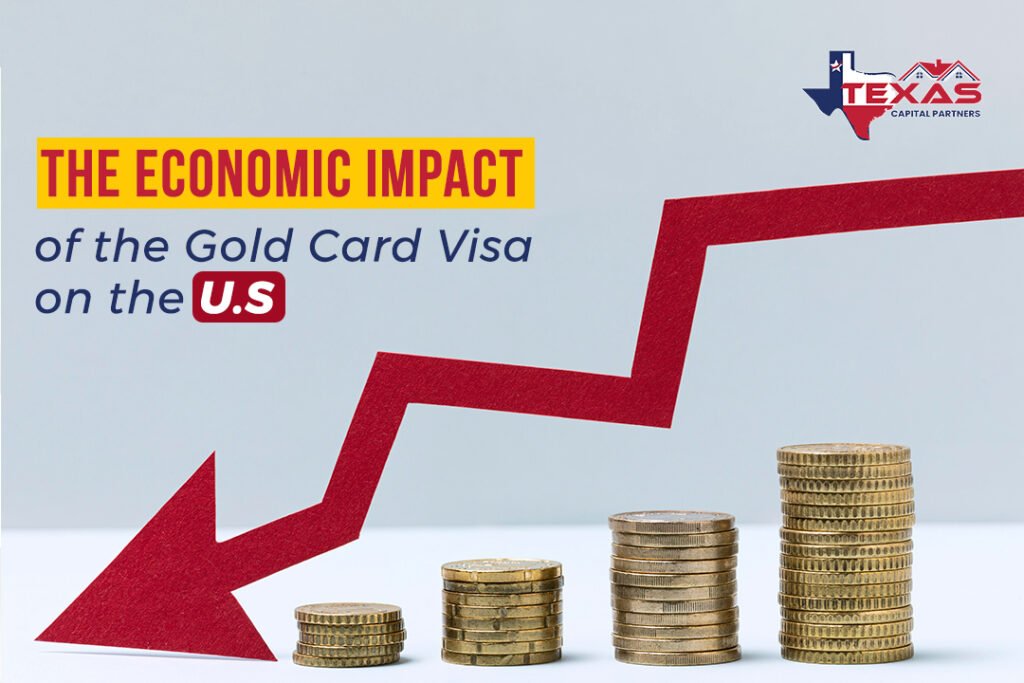The introduction of the Gold Card Visa by President Donald Trump marks a significant shift in U.S. immigration policy, aiming to attract high-net-worth individuals with a streamlined pathway to residency and citizenship. This program, priced at $5 million per applicant, promises substantial economic benefits, from revenue generation to job creation and tax contributions. In this blog, we delve into the potential economic impacts of the Gold Card Visa on the U.S. economy.
Revenue Generation: A Fiscal Boost
One of the most compelling aspects of the Gold Card Visa is its potential to generate massive revenue for the U.S. government:
- Projected Revenue: If one million Gold Cards are sold, the program could yield $5 trillion, significantly contributing to reducing the national debt, which currently exceeds $36 trillion13.
- Debt Reduction: These funds could be allocated toward infrastructure projects, healthcare reforms, or social programs, easing fiscal pressures and fostering economic growth.
Attracting Global Talent and Capital
The Gold Card Visa is designed to attract ultra-high-net-worth individuals, entrepreneurs, and investors worldwide. These individuals bring not only their financial resources but also their business acumen and global networks:
- Innovation and Job Creation: While the program does not mandate job creation like the EB-5 visa, the influx of foreign capital can indirectly stimulate innovation and employment through investments in infrastructure, real estate, and government-approved projects26.
- Economic Expansion: High-net-worth investors often establish businesses or fund ventures that drive local economies forward.
Impact on Tax Revenue
The Gold Card Visa offers unique tax incentives that could influence its economic impact:
- Tax Exemptions: Holders are exempt from taxes on income earned outside the U.S., but domestic income remains taxable. This structure ensures that foreign investors contribute to U.S. tax revenue while maintaining global mobility17.
- Potential Tax Reforms: Speculation exists around introducing non-resident investor status to limit tax liabilities to U.S.-sourced income. Such reforms could make the program even more attractive while ensuring a steady flow of tax contributions.
Replacing EB-5: Simplifying Investment Immigration
The Gold Card Visa simplifies many challenges associated with its predecessor, the EB-5 program:
- Higher Investment Threshold: The $5 million requirement is a significant increase over EB-5’s minimum investment of $800,000. This shift targets ultra-affluent individuals capable of injecting substantial capital into the economy15.
- No Job Creation Mandate: Unlike EB-5’s requirement to create ten jobs per investor, the Gold Card focuses solely on direct financial contributions. This streamlined approach reduces administrative complexity while still benefiting economic development.
Broader Economic Implications
Beyond direct revenue generation, the Gold Card Visa has broader implications for economic growth:
- Boosting Consumer Demand: Affluent investors often spend heavily on luxury goods, services, and real estate within the U.S., stimulating local economies7.
- Strengthening Global Competitiveness: By attracting top-tier talent and capital, the program positions the U.S. as a premier destination for investment immigration2.
Challenges and Controversies
While the Gold Card Visa offers significant economic benefits, it also raises concerns about equity and fairness:
- Inequality in Immigration: Critics argue that the program could widen existing inequalities in the immigration system by favoring wealth over skill or merit34.
- Monetization of Residency: The program essentially monetizes residency, establishing a dual system where affluent individuals can bypass traditional immigration routes3.
Conclusion
The Gold Card Visa represents a bold initiative to leverage immigration policy for economic growth. By attracting ultra-high-net-worth individuals willing to invest $5 million into American enterprises, this program promises transformative benefits—from reducing national debt to stimulating innovation and job creation.
As details of this program continue to emerge, it’s clear that its success hinges on strategic implementation and widespread participation. For investors seeking residency in a thriving economy and policymakers aiming to bolster fiscal stability, the Gold Card Visa is poised to be a game-changer.
For further insights or personalized advice about investment immigration opportunities like the Gold Card Visa, consult Texas Capital Partners today!



